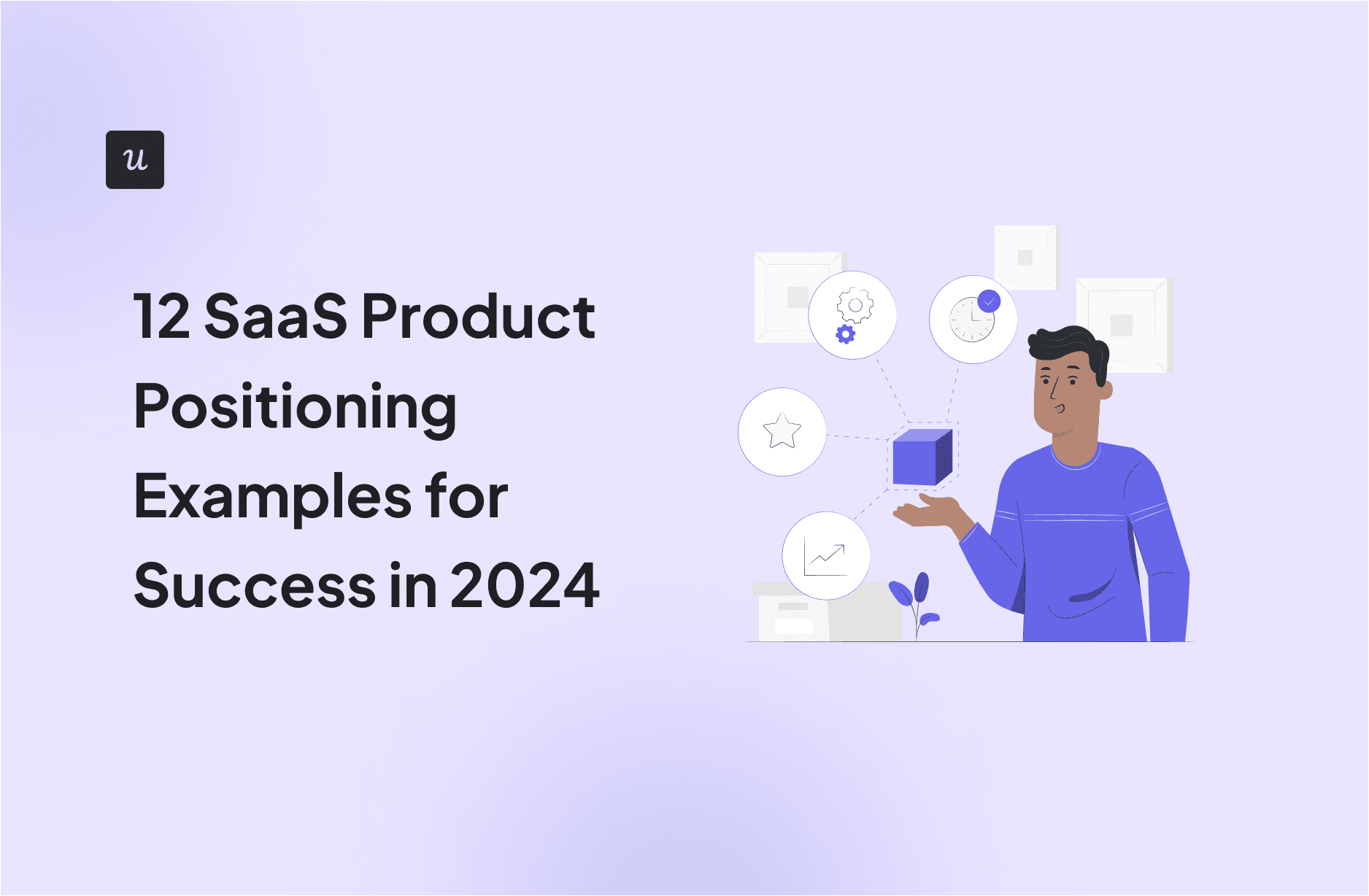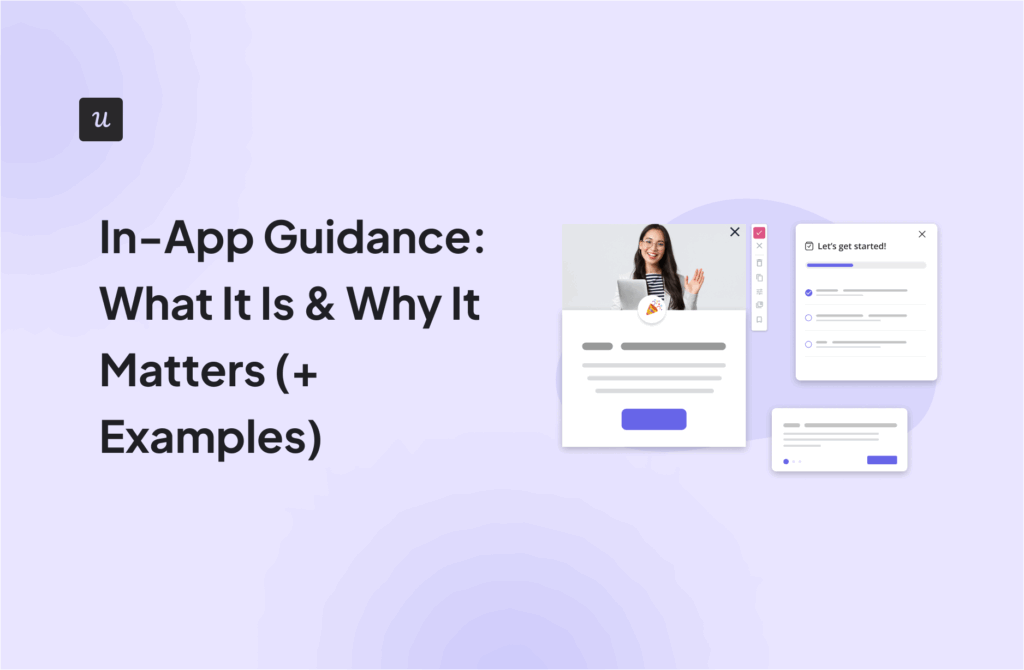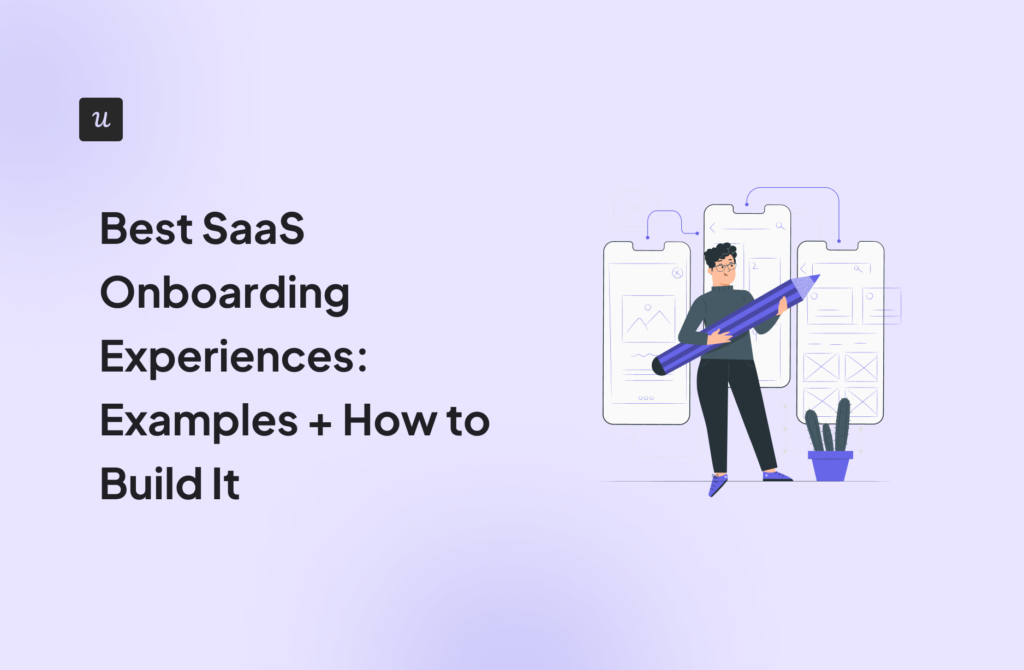
Positioning a SaaS product in a crowded market can be tough. But don’t worry, this article provides inspiring product positioning examples to get your creative juices flowing.
We’ll analyze the strategies of top SaaS brands and offer best practices to help you deliver value to the right target audience.
First things first…
Get The Insights!
The fastest way to learn about Product Growth, Management & Trends.
What is product positioning?
Product positioning is the process of strategically defining how your target audience perceives your product or service relative to its competitors.
If you’ve ever visited a SaaS website and wondered, “What exactly does this software do?”—that’s an example of bad positioning. Good positioning is clear, memorable, and easily identifiable.
So many things go into creating a successful product positioning, and the factors in play can vary widely between different market segments. However, below are three core elements you should always keep in mind:
- Target audience: Who are you trying to reach with your product? What are their needs, pain points, and motivations?
- Competitive analysis: What other products or services are available to your target market? How does your product compare?
- Unique value proposition: What makes your product different and better? What specific benefits does it offer that competitors don’t?
Seeing the elements above, you might start imagining how daunting it will be to create an effective positioning strategy and wonder if it’s worth the effort.
The short answer: yes, it is!
Here are some key benefits:
- Stronger market position: Product differentiation helps you stand out from the competition and become a leader in your category.
- Increased sales: Customers are more likely to make purchases when they clearly understand your product’s value and how it meets their needs.
- More brand awareness: A well-defined position makes your product more memorable and recognizable.
- Foster customer loyalty: It’s easier for customers to become repeat buyers when they connect with your product on an emotional level and perceive it as superior to alternatives.

What are the different kinds of brand positioning strategies?
There are five main brand positioning strategies to choose from:
1. Price-based positioning
This strategy focuses on offering competitive pricing, discounts, or demonstrating cost savings. It works well for businesses targeting price-sensitive customers or those looking for simpler solutions without all the bells and whistles.
For example, a new product management tool might position itself as a more affordable alternative to established players like Asana or Monday.com, attracting startups and small businesses with limited budgets.
2. Quality or prestige-based positioning
With this brand positioning strategy, your competitive advantage isn’t lower prices but your product’s superior quality and features.
This could mean offering cutting-edge technology for unparalleled performance, an exceptionally intuitive user experience, enhanced security features, or extensive integrations with other essential tools.
3. Use or application-based positioning
Use or application-based positioning emphasizes how your product excels in particular situations or adds value to a specific workflow.
For example, say a customer support platform positions itself specifically for e-commerce businesses. They may emphasize features like live chat integration, order tracking, and automated responses. This allows them to become the go-to solution for e-commerce companies while reducing competition from more general-purpose customer service platforms.
4. Competitor-based positioning
This strategy focuses on comparing your product to its competitors. It’s especially useful when you directly address the needs of users who have proven dissatisfied with existing solutions.
To make competitor-based positioning work, your sales and marketing strategy must go beyond simply stating that you’re “better.” You need to highlight the unique features, benefits, or innovations that set your brand apart.
5. Characteristics-based positioning
This brand positioning strategy projects a specific characteristic or feature that differentiates your product. It could be anything from a unique AI-powered capability or a particularly user-friendly interface to a commitment to data privacy or exceptional customer support.
For example, a note-taking app might position itself around its cross-platform compatibility and seamless synchronization across all devices.
What is a product positioning statement?
A product positioning statement is a compelling description of your product, target audience, and how your company aims to fill market gaps.
It’s an internal tool that guides your marketing efforts, shapes your go-to-market strategy, and ensures all teams are aligned on delivering a consistent message and customer experience.
Here’s a simple template you can use to create effective product positioning statements:

Using one of the formats above, here’s Userpilot’s brand positioning statement:
For SaaS product teams that are seeking to improve in-app onboarding and drive long-term engagement, Userpilot is a product growth platform that enables seamless, personalized user experiences—without writing any code.
Unlike traditional product analytics tools, our product empowers you to segment users with laser precision, trigger highly targeted in-app guidance, and track the impact of your efforts on user behavior and product growth.
Notice how the statement above incorporates the elements of a good product positioning statement. It…
- Mentions the target audience.
- Clearly states how the product solves customer needs.
- Creates differentiation by quickly highlighting unique features.
12 successful SaaS product positioning examples
Now that you’ve learned the fundamentals, let’s see how successful brands use these principles to capture their target audiences.
1. Canva
Canva needs no introduction as it has managed to penetrate the super competitive design market, achieving a massive user base of over 175 million monthly active users in a few years.
One thing that makes the platform so successful is its emphasis on simplicity and low cost.
Canva offers a generous free plan that immediately removes the barrier to entry for many users, making it accessible to anyone who wants to create visual content. This pricing-based positioning helped Canva undercut competitors like Adobe Creative Cloud, which require expensive subscriptions.
While emphasizing affordability, Canva doesn’t compromise on value. Its free plan provides ample templates, design elements, and features to create professional-looking visuals. Canva offers premium plans with even more capabilities, but the core value proposition remains strong even at the free level.

2. Coda
Coda is an all-in-one workspace with multiple use cases—teams can use it for simple note-taking, complex project management, building lightweight apps, and much more.
The platform employs a competitor-based product positioning strategy, as evident in its marketing materials and website copy.
For example, if you scroll the homepage long enough, you’ll find a quote from Fast Company that reads:
“It’s more powerful than Google Docs and more flexible than Airtable or Notion.” – Fast Company
Coda also created detailed comparison pages to further reinforce its strong brand positioning.

3. Superhuman
Superhuman is an email client designed to rescue users from inbox overload and dramatically increase productivity. Built for busy professionals and executives, it boasts features like AI-powered triage, blazing-fast speed, undo send, follow-up reminders, and read receipts to help users efficiently manage their inboxes.
The platform is a great example of using quality-based positioning to differentiate yourself and win market share.
Consistent with this positioning approach, Superhuman is comparatively more expensive than some of its direct competitors. On the bright side, the higher price point acts as a barrier to entry, increasing perceived value.

4. Intercom
Intercom is a customer communication platform that helps businesses connect with customers through live chat, email, and in-app messaging.
The company uses a segmentation-based positioning to cater to a broad audience. Instead of a one-size-fits-all approach, it tailors its messaging to resonate with the specific needs of different groups.
Intercom’s primary target audience includes product, customer support, and marketing teams, but it further segments its audience based on company size (e.g., small businesses vs. enterprise) and industry.

5. Dock
Dock empowers businesses, particularly startups and small to medium-sized enterprises, to create customer portals, digital sales rooms, and onboarding hubs without writing a single line of code.
It leverages a combination of a feature and benefit-based positioning strategy to win over customers. For example, Dock’s marketing materials emphasize its no-code tools, such as the drag-and-drop interface and pre-built templates, demonstrating that even non-technical users can easily build and customize their workspaces.

6. Miro
Miro has successfully established itself as the leading platform in the “visual workspace” category, largely due to its early entry into the market, extensive feature set, and focus on user experience.
This strong category ownership has made Miro almost synonymous with online whiteboarding, much like Zoom is for video conferencing.
Beyond its category-based product positioning, Miro effectively employs benefits-based positioning. For instance, its website is full of comprehensive guides and templates that demonstrate how Miro makes workflows easier for prospective customers.

7. Slack
Slack has become the preferred communication tool for many digital-first teams worldwide. Since its launch in 2009, the company has consistently employed multi-faceted product positioning:
- Benefits-based: Slack positions itself as a solution to the frustrations of email, offering real-time collaboration, organized channels for focused discussions, and a reduction in email overload.
- User-based: Slack specifically targets teams with tailored pricing plans and onboarding resources. This creates a powerful network effect, as team members invite colleagues, and word-of-mouth marketing organically expands Slack’s user base.
- Competitive positioning: While offering similar features to competitors like Microsoft Teams, Slack differentiates itself through a more user-friendly interface, a wider range of integrations with other tools, and a strong brand reputation for innovation in the workplace.

8. Docusign
Docusign provides e-signature technology and digital transaction management services.
This company is a great example of use or application-based positioning. By focusing on the specific application of replacing paper-based agreements with a digital solution, Docusign has successfully established itself as a leader in the e-signature market. Its use-case-driven positioning effectively communicates the value of its technology and resonates with businesses seeking to modernize agreement processes.

9. Monday.com
Monday.com is a customizable work operating system (Work OS) that empowers teams of all sizes to manage and automate their workflows.
The platform distinguishes itself through a characteristics-based positioning strategy that emphasizes its flexibility, visual appeal, and intuitive interface.
This differentiation is evident in its simple interface, customizable dashboards, and diverse project views (including Kanban boards, Gantt charts, and calendars).

10. Zoho One
Zoho One is a comprehensive suite of over 45 integrated business applications covering everything from CRM and marketing to finance and HR. It aims to provide a complete solution for businesses to manage all aspects of their operations in one place.
The company uses a pricing-based positioning strategy, offering access to this suite of applications for a relatively low monthly fee (starting at $30/user/month). This all-in-one approach delivers exceptional value for businesses, particularly startups and growing SMEs, who need many tools but may have limited budgets.

11. Wistia
Wistia is a video marketing platform offering various tools for businesses to create, customize, and share commercial videos.
This platform is an excellent example of competitor-based positioning. Wistia often compares itself to YouTube, highlighting its customization options, privacy controls, and focus on business use cases.

12. Userpilot
Userpilot is an all-in-one product growth tool that helps SaaS companies understand user behavior and trigger engaging in-app experiences.
As a complex product targeting mid-market companies, we approach brand positioning comprehensively, using a range of strategies to demonstrate value and attract the right customers.
- Price-based positioning: Userpilot provides a free trial, but this is only available after a call with a Product Expert to understand user needs and offer tailored recommendations. Additionally, Userpilot offers more value for money compared to competitors like Amplitude and Pendo.
- Characteristics-based positioning: Userpilot is code-free and easy to use. We offer customers pre-built templates for almost everything, and the intuitive interface makes it easy for non-technical teams to create in-app experiences from scratch.
- Application-based positioning: Userpilot addresses the core needs of SaaS companies by providing solutions for critical challenges like improving user onboarding, driving product adoption, and preventing churn.

So, how do you build a successful product positioning strategy?
This section will show you quick steps, but you can check out this post if you need a more in-depth guide.
That said, here’s a 5-step process to follow:
1. Identify your target market
Your product or brand positioning strategy is effective to the degree that you understand your target audience. So, dedicate some time to conducting proper user research. Gather as much information as you can through surveys, focus groups, interviews, and social media listening.
Use all the information you gathered to create detailed user personas highlighting the target audience’s needs, pain points, jobs to be done, and goals.
Below is a template you can use:

2. Conduct market research
While the first step helps you understand who you’re trying to reach, this step gives you crucial insights into the competitive landscape. This includes analyzing your competitors’ strengths and weaknesses, their positioning strategies, and how they address (or fail to address) emerging market trends and customer preferences.
Product growth tools like Userpilot can help simplify this process. For example, you can utilize Userpilot to create an in-app survey that gathers data on customers’ preferred pricing models and use that data to inform your product positioning strategies.

3. Define your product’s unique selling point (USP)
Your USP is what makes your product stand out and provides a compelling reason for customers to choose it over alternatives.
It could be a unique feature, a superior benefit, or a specific technology, like Userpilot’s no-code approach to building in-app experiences.
4. Create a clear product positioning statement
Remember the positioning statement template we shared earlier? Use it as a guide for crafting your statement.
The final result doesn’t have to mirror the template word for word, but ensure it captures your target audience’s needs and the unique solution you provide.
5. Test your product positioning and refine
Once you’ve created your product positioning statement and started implementing it, the next step is to gather feedback and analyze its effectiveness.
This can involve A/B testing different messaging, conducting feedback surveys, or tracking key metrics like website traffic, conversion rates, and customer acquisition costs.
Again, Userpilot can help. Aside from allowing you to conduct A/B and multivariate tests, you can segment your research based on positive and negative customer feedback so you can see what’s working. And where, potentially, you could make some improvements.

Conclusion
After learning about the various types of product positioning strategies, you might wonder if there’s a silver bullet—one particular strategy that works better than the others. The truth is, there’s no single “best.” The most effective approach depends on several factors: your product’s unique strengths, your target audience’s needs, brand personality, and competitive alternatives.
Feeling inspired by the product positioning examples in this article and ready to create your own winning strategy? Userpilot can help you gather customer feedback, analyze user behavior, and create targeted in-app experiences that reinforce your positioning and drive product growth.








